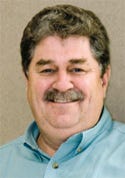The Evolution of Endovascular Repair 4353
This year's featured leaders illustrate medtech's ability to adapt and thrive in an ever-changing business environment.
September 1, 2007
COVER STORY
Return to article: |
Over more than four decades, Cook Medical has pioneered numerous innovations aimed at reducing patient risk and improving the quality of care that physicians can provide. An example is the Zenith AAA endograft, which provides an alternative to traumatic surgery for treatment of the life-threatening condition abdominal aortic aneurysm (AAA).
|
AAA occurs when a section of the abdominal aorta, the body's main circulatory vessel, weakens and bulges into a fragile, balloon-like swelling. Traditionally repaired by means of open surgery, these aneurysms can now be treated with a minimally invasive procedure. Endovascular aortic repair (EVAR) involves relining the aorta with a tube-like fabric graft reinforced with metal Z-stents to reduce pressure on the aneurysmal sac.
“Cook helped pioneer EVAR,” says Barry Thomas, vice president and global leader for Cook Aortic Intervention. “Today, it is one of the few companies actively pursuing endovascular treatment solutions for aortic disease along the entire length of the vessel.”
Featuring a modular design that can be personalized to match the aortic anatomy of most patients, the Zenith AAA endograft system incorporates a number of innovations that have helped eliminate problems associated with earlier AAA endograft designs. For example, the Zenith's unique suprarenal fixation barbs hold the graft in place after deployment, reducing the likelihood of stent-graft migration.
Cook Medical has made great strides in its mission of improving patient outcomes by providing physicians with treatment options covering a much broader range of patients with AAA. “This evolution of endovascular repair demonstrates Cook's dedication to addressing the individual needs of each patient,” Thomas says. “The company recognizes that it's no longer a one-size-fits-all device market.”
Copyright ©2007 MX
About the Author(s)
You May Also Like



